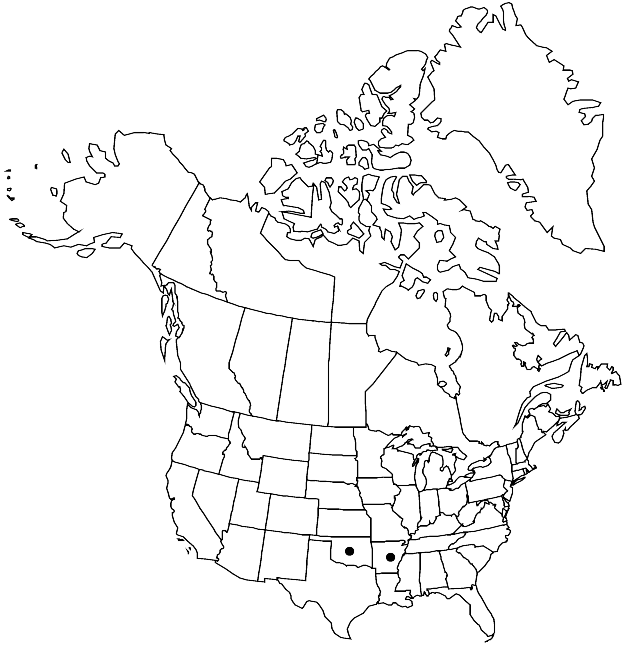Streptanthus squamiformis
Rhodora 58: 354. 1957.
Annuals; sparsely to densely pubescent or glabrous. Stems (simple from base), unbranched or branched distally, 1.5–8.5 (–11) dm, (sparsely to densely hirsute basally, usually glabrous distally, rarely throughout). Basal leaves (withered by flowering); not rosulate; petiolate; blade similar to cauline. Cauline leaves: blade ovate to oblong or lanceolate, 1–9 cm × 5–30 mm, (smaller distally), base amplexicaul, margins usually entire, rarely shallowly dentate, (midvein abaxially glabrous or pubescent, surfaces glabrous distally). Racemes ebracteate, (dense to lax). Fruiting pedicels divaricate-ascending, (straight), 5–16 mm, (glabrous or pubescent). Flowers: calyx campanulate; sepals purplish, 4–7 mm, not keeled, (hirsute, trichomes 0.7–2 mm, both pairs with subapical callosities, 1–2.5 mm); petals purple (with dark purple center), 9–17 (–20) mm, blade 5–10 × 5–7 mm, margins not crisped, claw 4–7 mm, narrower than blade; stamens tetradynamous; filaments: median pairs (distinct), 5–6 mm, lateral pair 3–4 mm; anthers (all) fertile, 1.5–2.8 mm; gynophore 1–1.5 mm. Fruits ascending to suberect, smooth, straight, flattened, 0.6–1.4 cm × 2–3 mm; valves each with prominent midvein; replum straight; ovules 54–86 per ovary; style 1–1.5 mm; stigma strongly 2-lobed. Seeds broadly oblong, 2–2.7 × 1–1.2 mm; wing 0.1–0.25 mm wide, continuous.
Phenology: Flowering Apr–May.
Habitat: Glades, steep slopes, sandstone and soft shale in ravines or rocky openings in oak-pine-hickory forests
Discussion
Of conservation concern.
Streptanthus squamiformis is known from the Ouachita Mountains in Arkansas (Howard, Polk, and Sevier counties) and Oklahoma (McCurtain County).
The similarities between Streptanthus squamiformis and S. maculatus in most aspects are truly remarkable, especially in foliage, fruits, seeds, and flower color and size. The former differs by having the sepals densely pubescent (versus glabrous) with trichomes to 2 mm, both sepal pairs with subapical callosities 1–2 mm (versus callosities absent or, rarely, present on lateral sepals and 0.1–0.3 mm), smaller anthers (1.5–2.7 versus 3–4 mm), and pubescent or, sometimes, glabrous (versus always glabrous) fruiting pedicels.
Selected References
None.
Lower Taxa
"elongated" is not a number."thick" is not a number."dm" is not declared as a valid unit of measurement for this property."dm" is not declared as a valid unit of measurement for this property.
